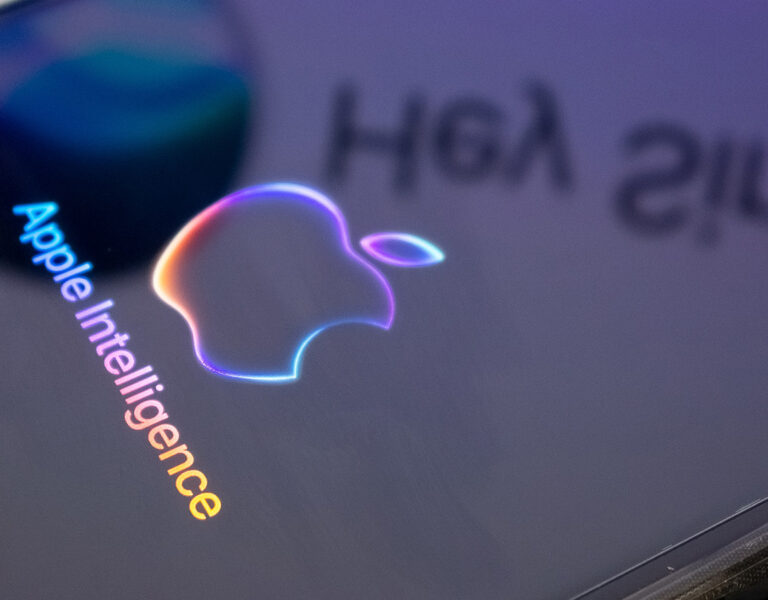Apple finally threw its hat into the ring of artificial intelligence. Apple’s approach isn’t a copycat of Microsoft or Google. Its entry got the important things right.
This year’s show was actually worth the wait. A year and a half after OpenAI launched ChatGPT and shocked the world, Apple finally threw its hat into the ring of artificial intelligence.
The unveiling of “Apple Intelligence” at Apple’s Worldwide Developer Conference wasn’t an obviously mind-blowing event. It lacked the wow factor of those early Steve Jobs presentations, when we saw the first iPhone or iPad. And it fell short of OpenAI’s gasp-inducing launch of ChatGPT version 4o a month earlier, which seemed to bring human-like AI a step closer to reality.
Apple’s late arrival to the AI party should make the rest of us feel a little better. After all, if even one of the world’s most innovative, deep-pocketed corporations was caught flat-footed by generative AI, maybe we can go easier on the leaders of our regional bank or hospital system. Leaders from food and beverage firms to pharmaceutical companies to small and medium-sized businesses are struggling to respond to the most transformative new technology of our time.
Some business leaders have responded with procrastination. They know that AI matters, but they aren’t treating it with the necessary urgency and focus to yield the greatest impact. Some are raising valid concerns around privacy or intellectual property as reasons not to do anything at all. This is the same mindset that led many retailers to underinvest in e-commerce in the early days of the internet, giving Amazon a free head start.
Other execs are taking a scattershot approach. They’re demonstrating the right level of urgency, but they don’t really have a plan. As a result, they’re trying to sprinkle some AI magic dust over everything in the hope that something sticks. And while it isn’t a bad idea to start playing around with Midjourney or adding a chatbot to your website, these experiments can end up as distractions with little real payoff for the business.
The third approach has been to bet the house. These leaders are throwing so many resources at AI that it’s threatening to starve other initiatives that are critical to the long-term health of the business. Innovation isn’t just about embracing the latest cool thing—it’s also about preventing the business from going bust. AI may be the thing that kills you, but so could a few other threats that demand just as much attention.
Apple did none of these three things. Its entry into AI got the important things right. More importantly, it offered valuable lessons for every executive who’s struggling to figure out what their company might do as well.
An AI Strategy That Plays to Your Strengths
Apple’s approach to artificial intelligence isn’t a copycat of Microsoft or Google. Its approach leverages a handful of unique strengths the company brings to the table.
First, Apple has more devices in the hands of more people than anyone else. By integrating its version of AI into MacOS and iOS, the company is building on that installed base. Apple’s AI will work across iPhones, iPads and Macbooks to allow users to work seamlessly from any device.
Second, Apple is leveraging its unique strengths in creating beautiful user experiences. As CEO Tim Cook put it, the overarching goal is to make “your most personal products even more useful and delightful.” The system will summarize and prioritize messages and offer rewriting tools for emails and other text. This should help ensure faster adoption by mainstream consumers who have no desire to become skillful prompt engineers.
Third, Apple has built unique competences in designing its own hardware, including its own CPUs. The company announced that the new AI features will leverage those chips, first on local devices and then in a proprietary cloud powered by Apple’s processors. This should give it a head start on its rivals and avoid dependency on dominant AI chipmaker Nvidia.
Fourth, and perhaps most importantly, Apple has differentiated itself in recent years by being the rare tech company that seems to genuinely care about consumers’ privacy. A big chunk of the presentation was devoted to explaining how Apple’s version of AI will protect users’ personal data. Much of the processing will be done on-device and even Apple won’t know the details of more power-hungry queries that need to go to the cloud.
Like Apple, companies would be wise to take a moment and clearly identify the assets and capabilities they bring to the table when formulating their AI strategy.
An AI Strategy That Helps Solve Strategic Challenges
Having leveraged what makes the company great, Apple’s approach to artificial intelligence also helps solve critical challenges to the business.
One of its biggest challenges has been sagging sales of new iPhones. Sales of its flagship device fell 10% year-on-year in the quarter through March. That’s largely because there isn’t a strong reason for users to upgrade to the latest model. Sure, the iPhone 15 has a superb camera but the ones on the iPhone 14 and 13 are pretty great, too. Because Apple’s AI strategy focuses on processing on your local device, its new features won’t work on old devices. Consumers will finally have a reason to upgrade.
Another challenge has been Apple’s struggle to connect with consumers outside of a screen. Its Siri virtual assistant has languished for years, even as competitors like Amazon used its Alexa interface to get into more people’s homes. As part of the new strategy, Siri gets an AI brain transplant, enabling it to respond to commands and take actions based on the user’s “personal context.” That should help level the playing field.
The company has also struggled to attract and retain technical talent in this space. It turns out that many AI researchers have the mindset of academics and like to share and publish what they discover. That hasn’t squared with Apple’s notoriously secretive culture. Apple is trying to solve the problem by partnering with OpenAI and a host of other players yet to be named. Admittedly, it’s unclear how effective this approach will be. But it’s a start.
Of course, the biggest challenge that Apple faces is with the public markets. For the last year and a half, investors have been wanting to know what Apple’s plan was. Any strategy that looked like a copycat approach to OpenAI or Google would only show how late Apple was to the game. Instead, the company reframed AI as “Apple Intelligence,” and focused on more immediate (and admittedly smaller scale) solutions that are more about helping write an email than they are about developing true Artificial General Intelligence. That said, I have no doubt that there’s a team working at breakneck speed inside of Apple to catch up to OpenAI, Google, Anthropic and the rest. That’s just not part of the public strategy. And the public strategy seems to be working. Hours after its AI launch, Apple’s share price hit an all-time high.
When creating an effective AI strategy, the most important thing that business leaders can do is to define the problems to be solved. Those aren’t technical challenges—they’re business challenges.
Get In The Game
In the end, Apple’s first big foray into AI is table stakes compared to what it could do in the years ahead. But the important thing is that—rather than procrastinate, get distracted, or go all in on AI—it got into the game with a great initial strategy based firmly on what makes it great and the key challenges it faces. That’s a lesson that every CEO and head of strategy can take away.

 Dev Patnaik
Dev Patnaik


